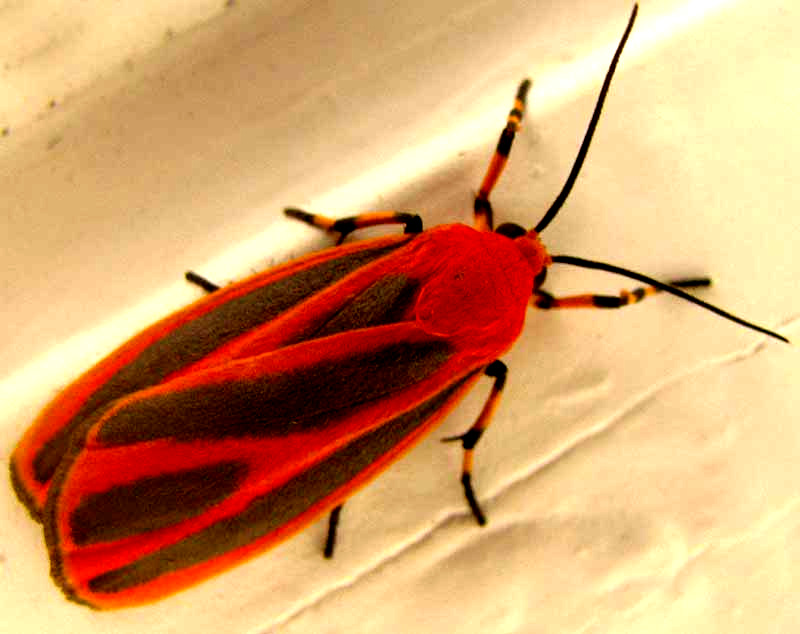Excerpts from Jim Conrad's
Naturalist Newsletter

from the May 4, 2014 Newsletter issued from the Frio Canyon Nature Education Center in the valley of the Dry Frio River in northern Uvalde County, southwestern Texas, on the southern border of the Edwards Plateau; elevation ~1750m (~5750 ft); N29.62°, W99.86°; USA
SCARLET-WINGED LICHEN MOTH
Last week we looked at an Ethmia Moth, large numbers of which spent their days gathered on the white walls of the building I was painting. This week the Ethmia Moths have almost disappeared, but another larger and much more colorful species has taken its place, at least near lights that stay on at night, and they're just as numerous as last week the Ethmia Moths were. That's one above.
Volunteer bug identifier in Ontario recognized this immediately as a kind of lichen moth, genus Hypoprepia, because she's seen them at her place. However, in our area there are two very similar lichen moth species, Hypoprepia fucosa, and Hypoprepia miniata, so which was this one?
After comparing our picture with many identified pictures on the Internet, it seems to me that ours is HYPOPREPIA MINIATA, the Scarlet-winged Lichen Moth. It appears to be a little broader than H. fucosa, plus the dark area on each of its exposed wings extends farther forward, well passing the orange, rounded thorax behind the head, which usually it doesn't in H. fucosa.
Lichen moth caterpillar larvae feed on tree lichens and blue-green algae growing on trees, fallen logs and rocks. Maybe because such food contains relatively little nutrition, the caterpillars might cannibalize smaller larvae.